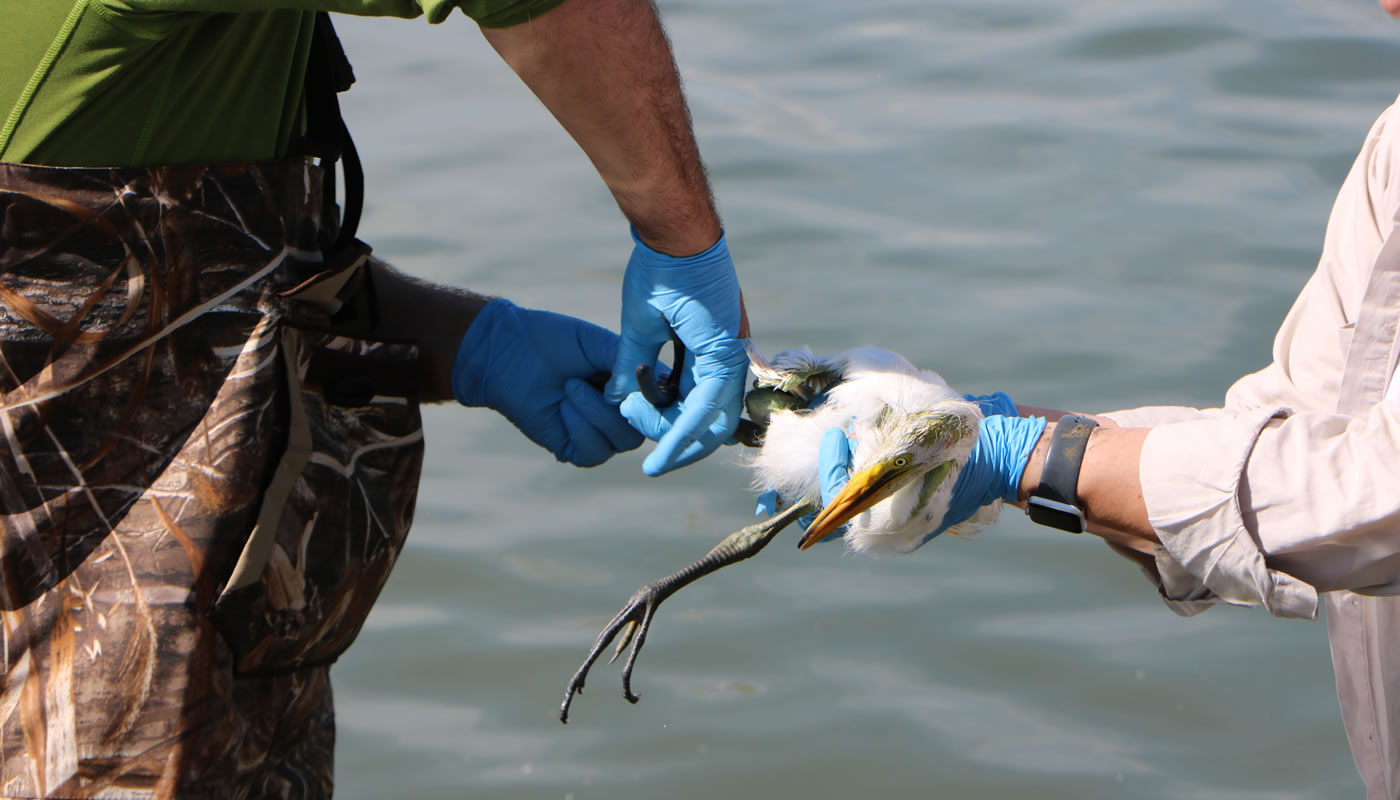In March, a US Fish and Wildlife Service biologist captured a great egret at the Cape Canaveral National Seashore and Merritt Island National Wildlife Refuge in Florida within sight of the former space shuttle launch pad. The graceful egret, with a curved neck, long black legs and striking white plumage, bore a band that connected it directly back to the Forest Preserves of Cook County.
The Forest Preserves wildlife team banded the bird as a fledgling last summer as part of its heron rookery banding program, which includes rookeries at Baker’s Lake, Busse Woods, McGinnis Slough, Powderhorn Lake and other preserves.
Reports from other parts of the country of birds banded in the forest preserves aren’t very common, so Forest Preserves wildlife staff were excited to get the Florida biologist’s call. “There are so few people who do what we do that the chances are small of another bander finding your bird,” said Forest Preserves Chief Wildlife Biologist Chris Anchor.
Yet the banding is important for another reason. Forest Preserves biologists regularly recapture birds they’ve banded in past years when they return to Cook County. “We can catch our banded bird again and draw another blood sample,” said Anchor. “That allows us to find out what diseases the bird has been exposed to and what kind of titer it’s throwing. (Titer is the concentration of antibodies in the blood.) It can tell us whether the animal has active disease, what it’s been exposed to and sometimes when it was exposed.” One of the unique functions of the Forest Preserves’ wildlife section is its work with the Centers for Disease Control to help track zoonotic diseases, or diseases passed between animals and humans.
The report from Florida adds a layer of information, indicating where the egret migrated during the winter. “This one went to the Atlantic Coast of Florida,” said Anchor. “But it may have ended up in the Gulf Coast or Texas or Mexico.” Data points like these help build a picture of the movement of animals as well as the diseases they may carry. “If we wanted to track something like avian influenza, if birds were coming down with the disease on the East Coast, there’s your pathway to bring it back,” said Anchor. “Otherwise we’re just guessing.”
Biologists will be watching for the egret this summer should it return to one of Cook County’s rookeries.

